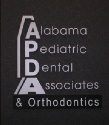I just got back from a continuing education meeting which happened to be located in Las Vegas. I also watched the movie "21" which is based on the real life story of a group of MIT students who learned how to count cards and beat the casinos at blackjack. They made millions. They did not let the emotion of the moment influence their decisions. They used simple math, counting the cards already dealt to increase their chances of a winning bet: data analysis and rather fast arithmetic.
How much of dentistry is pure data analytics and how much is gut instinct? Well, there are two ways to look at it. First, is cold science, numbers, and analytical data analysis. We do a clinical exam, we look at x-rays, perform diagnostic tests, ask questions. We consult the published research. In medicine and dentistry this might be likened to flow chart decision making, or to something called evidence based science. We use experiments, data and facts to decide the most likely outcomes. If we don't, we are just guessing.
Second, there is the theory that real world experience makes the difference, raw talent, esthetic sense, gut instinct. This is actually backed up by the study that mastery comes about with many hours of practice, error, corrections, and well, experience. The more you have done something, the better you are at accomplishing the task at the level of a master, the expert.
My analysis is that they both matter. You have to make decisions based on real science and study of the available data. Dentists spend four to ten years after college in graduate education and training in science and techniques. Then, there are years of continuing education classes after that. Collect the facts, the data, analyze, compare, then decide, act. The problem with dentistry and medicine is that there is always a lot of data that is not knowable, that is missing or not timely. That is where experience comes into play. That is, making decisions when you do not have all the data you would like to have. Sometimes there is more than one appropriate option. Whether we like it or not, there is a lot of emotion involved. Sometimes you go on experience and gut instinct. Count the cards if you can, but sometimes you develop senses that tell you the card count at a subconscious level. I'd like to think going to the dentist is not a gamble, but as close to a sure thing as you can get.
Saturday, March 02, 2013
Subscribe to:
Post Comments (Atom)













9 comments:
Analytics will simply shift optimization to another level and it will certainly also impact the health industry. Love Analytics.
my sister's son is 15 year old. his temporary teethes have not fallen till now.. is there any problem.. what to do .. please suggest me..
Well, occasionally I see a 14 year old with baby teeth still present because they just have a normal but slow growth pattern. I suggest having a pediatric dentist do an examination to see if there are missing permanent teeth that might account for the presence of baby teeth hanging on longer than you might expect. There are several conditions that should also be considered. Your dentist can tell usually with an examination and a proper radiograph. There is more here on the blog about missing permanent teeth and things like that.
Interesting post. Data analysis, gut instinct and even clinical experience all probably take a back seat to advanced training. Your point about mastery nails it. Just as those card counters had to master particular skills.
Is there long term analysis on the effects of palatal exansion, especially using a rapid appliance (i.e. headaches, sinus issues, neck/shoulder, postural, etc.)? If so, where can I find it?
Also wanting to know if there are any alternative methods, i.e. cranial sacral, etc. that might do the same thing but in a more natural, body centered way.
Lastly, the ALF and Bent Wire System appliances seem to be more gentle and allow the child some modest control in particpiation. Do they effectively accomplish the same thing as a rapid palate expander. Is it a longer process?
See my post on posterior crossbites (palatal expansion) here: Posterior Crossbite
Rapid and slow are really not that much different. All orthodontics is fairly slow. RPE's expand about .25 mm per day at most. I use the quad helix most of the time as many parents have a hard time finding the little key hole and turing the thing. Both work well.
movie 21 is very nice.i like that movie so much.
I am having to make a hard decision for my daughters dental situation. We are in the middle of deciding between traditional orthodontics and the alternative ALF approach. She has two adult canines under the gums and coming into the wrong space and potentially killing the roots of the other adult teeth. The traditional orthodontist suggests surgery to get these relocated by attaching chains from those teeth and to her braces which are on her teeth currently. She has also had some speech related issue with pronunciation of certain vowel sounds.
I am not opposed to this surgery if necessary. My question is concerning the difference of the ALF system versus the quad helix. I am told that the ALF system would work with supporting the expansion of cranial bones holistically and this could help with her speech and overall crowding of cranial bones. The orthodontist using the quad helix says that technique will also do a very similar thing.
I would love any thoughts or insights on this. Thank you
I have to say I have not heard of the there AFL. I use a quad helix frequently. They are used to expand the upper arch primarily to correct crossbones. Exposure of unerupted permanent teeth and a chain to "pull them down or in" is not uncommon.
Post a Comment